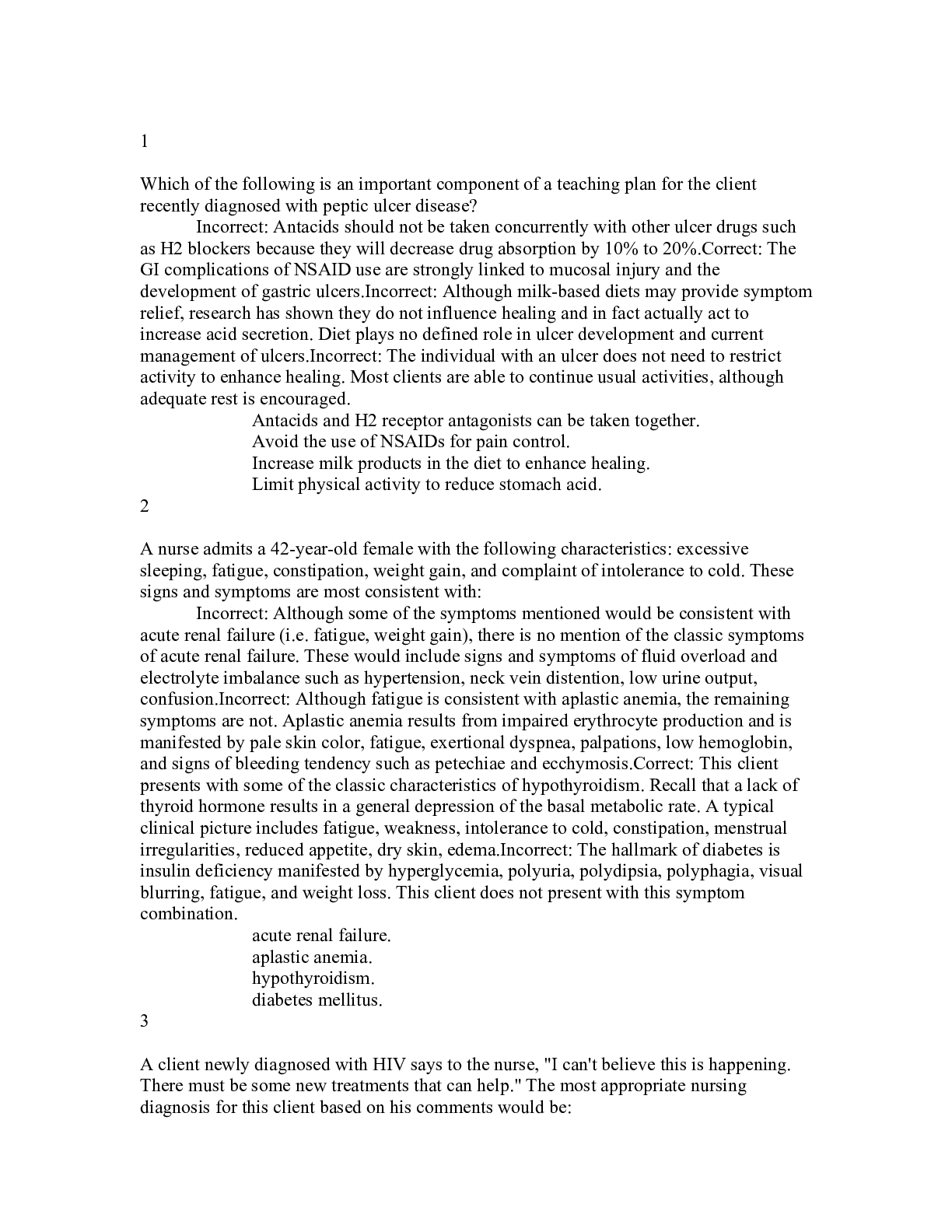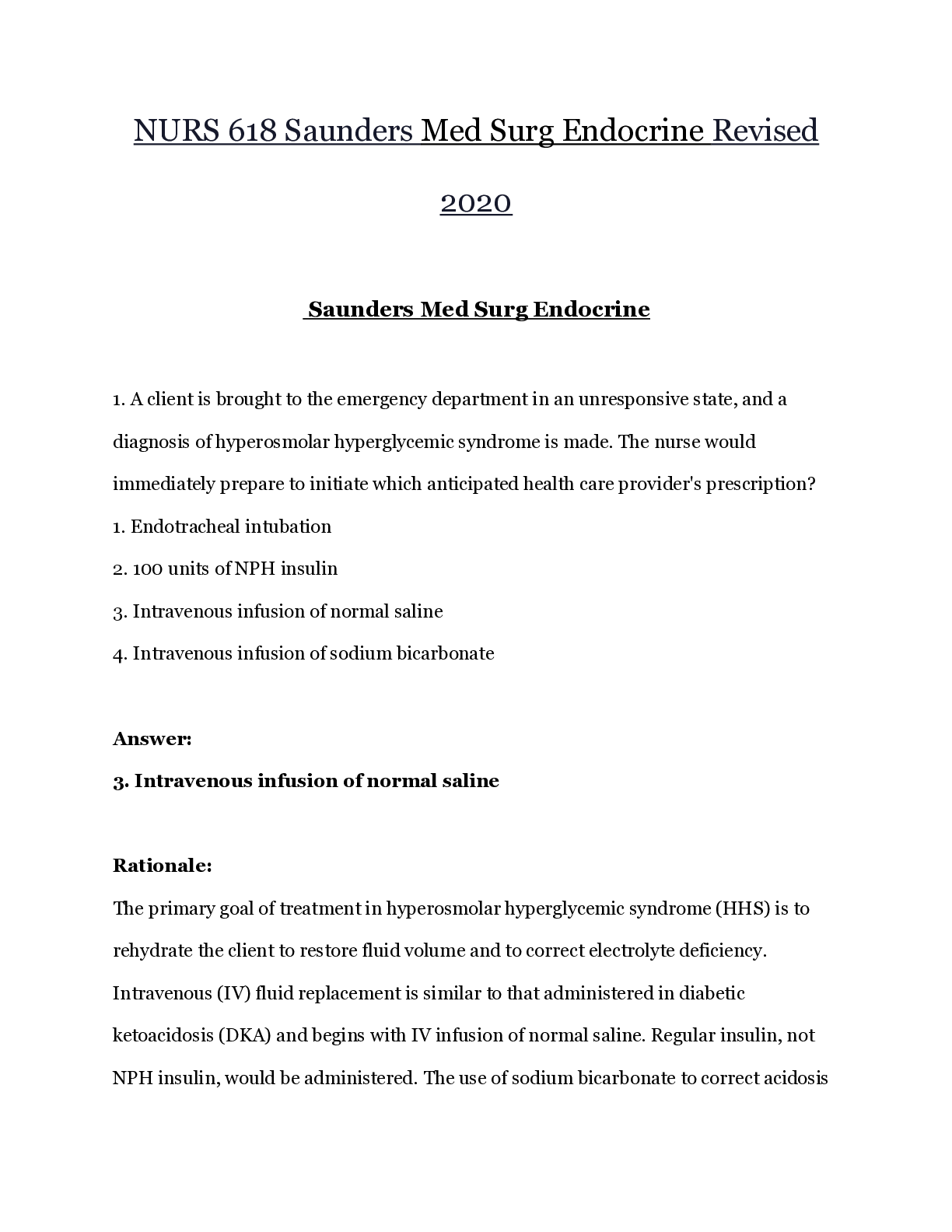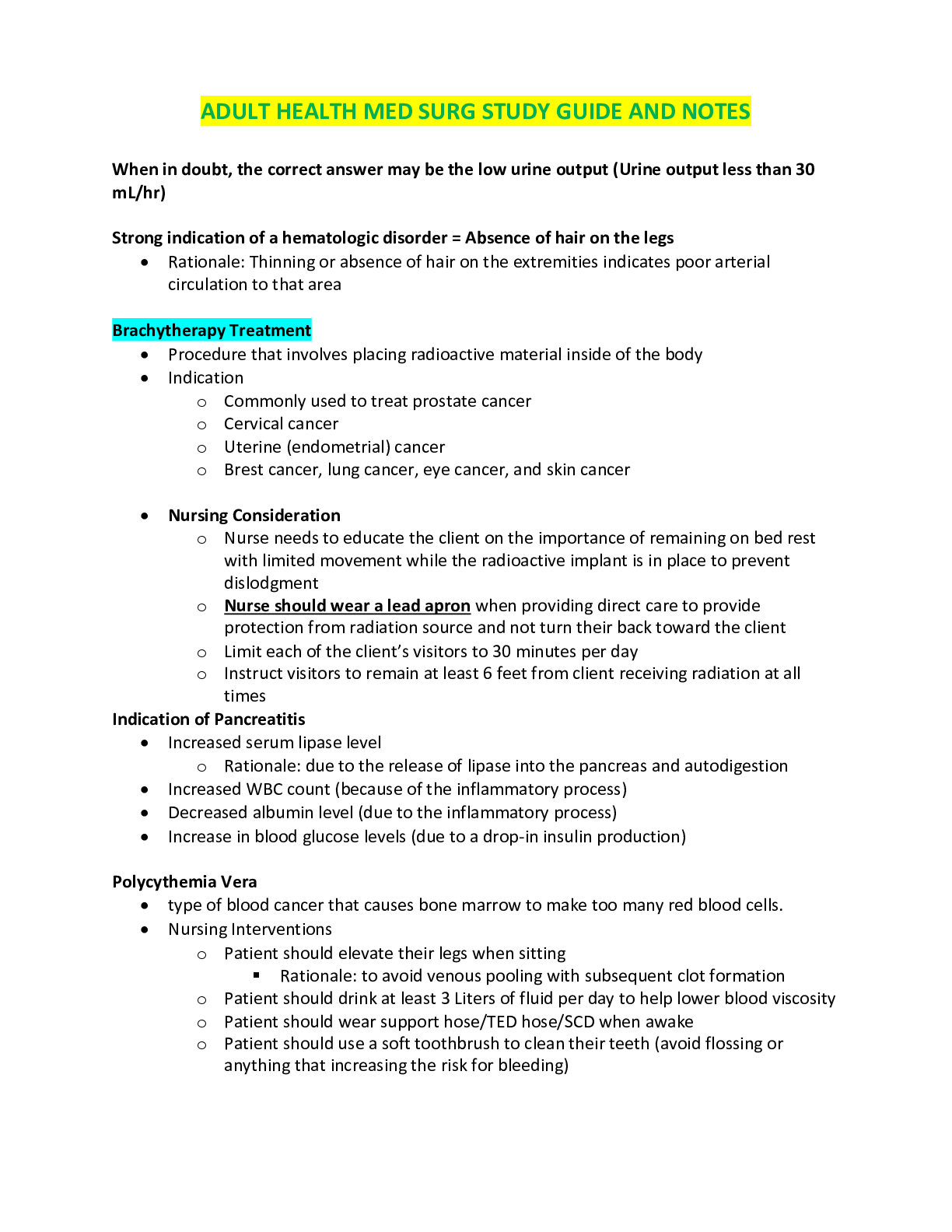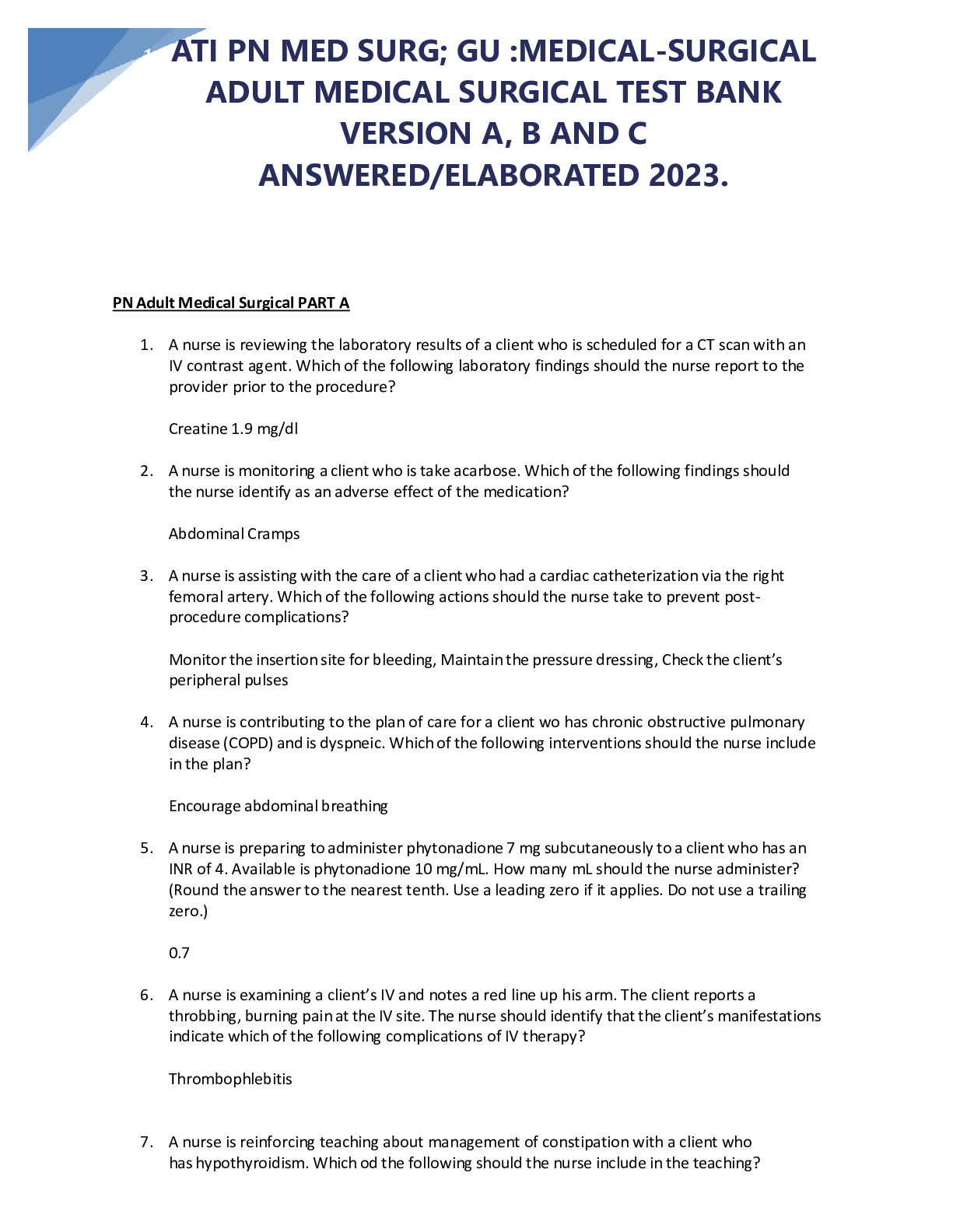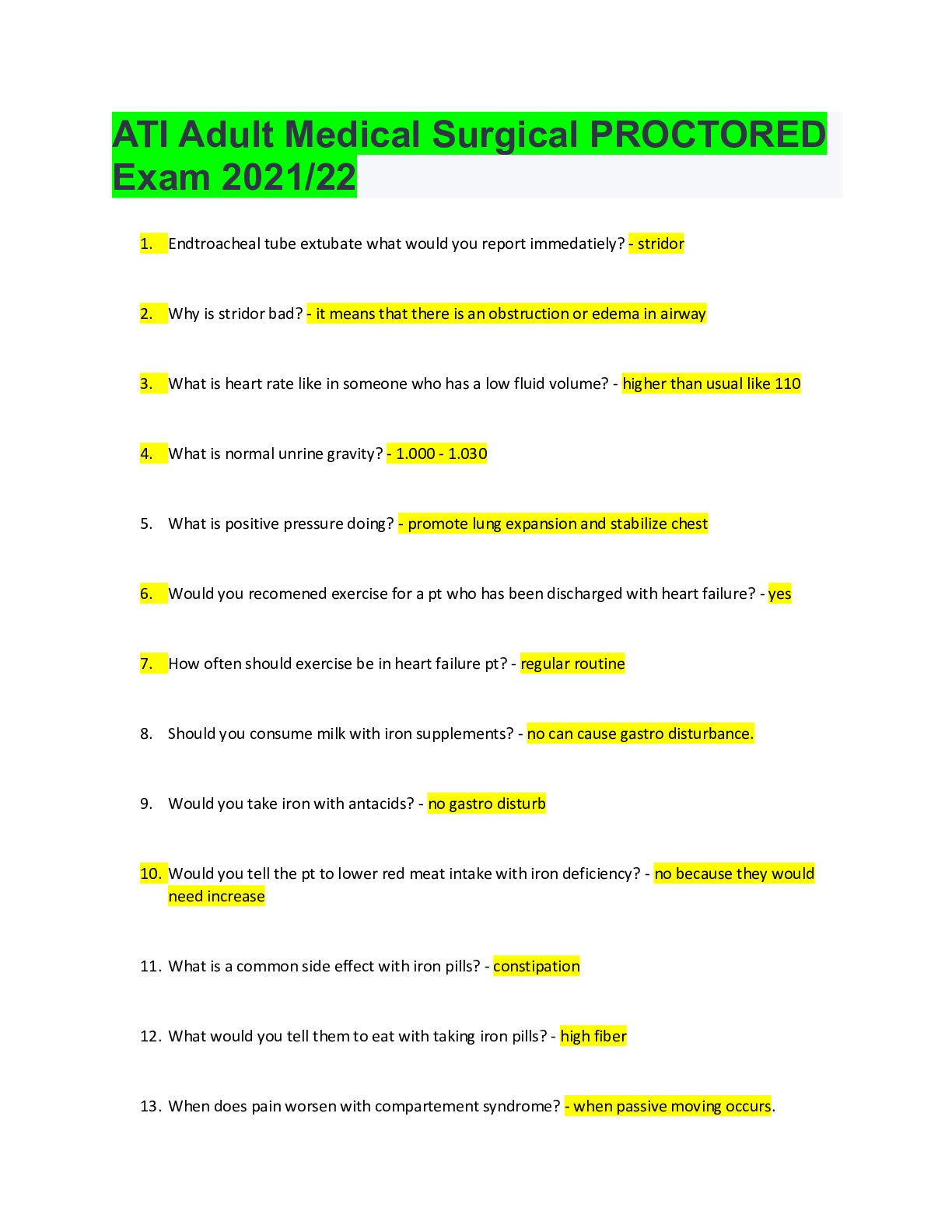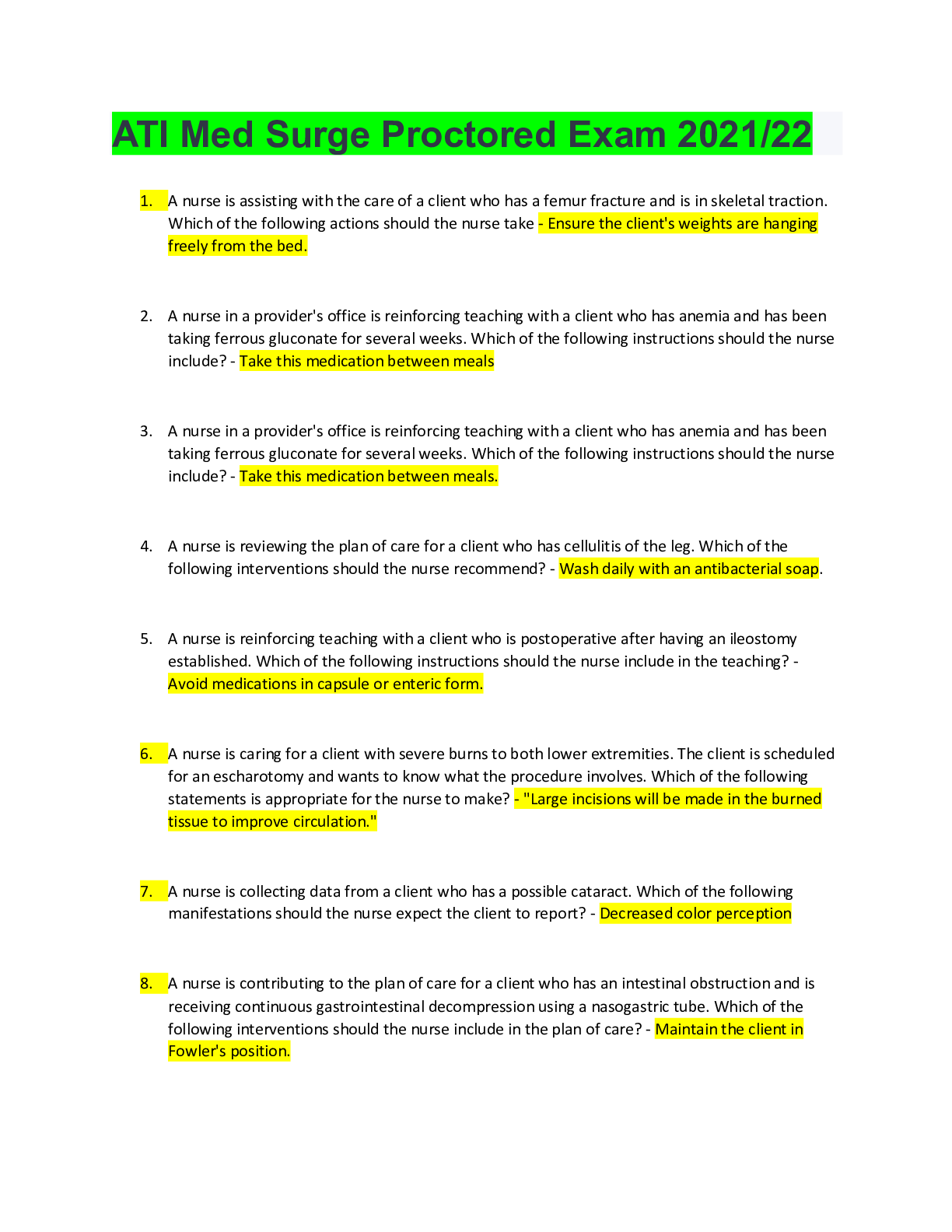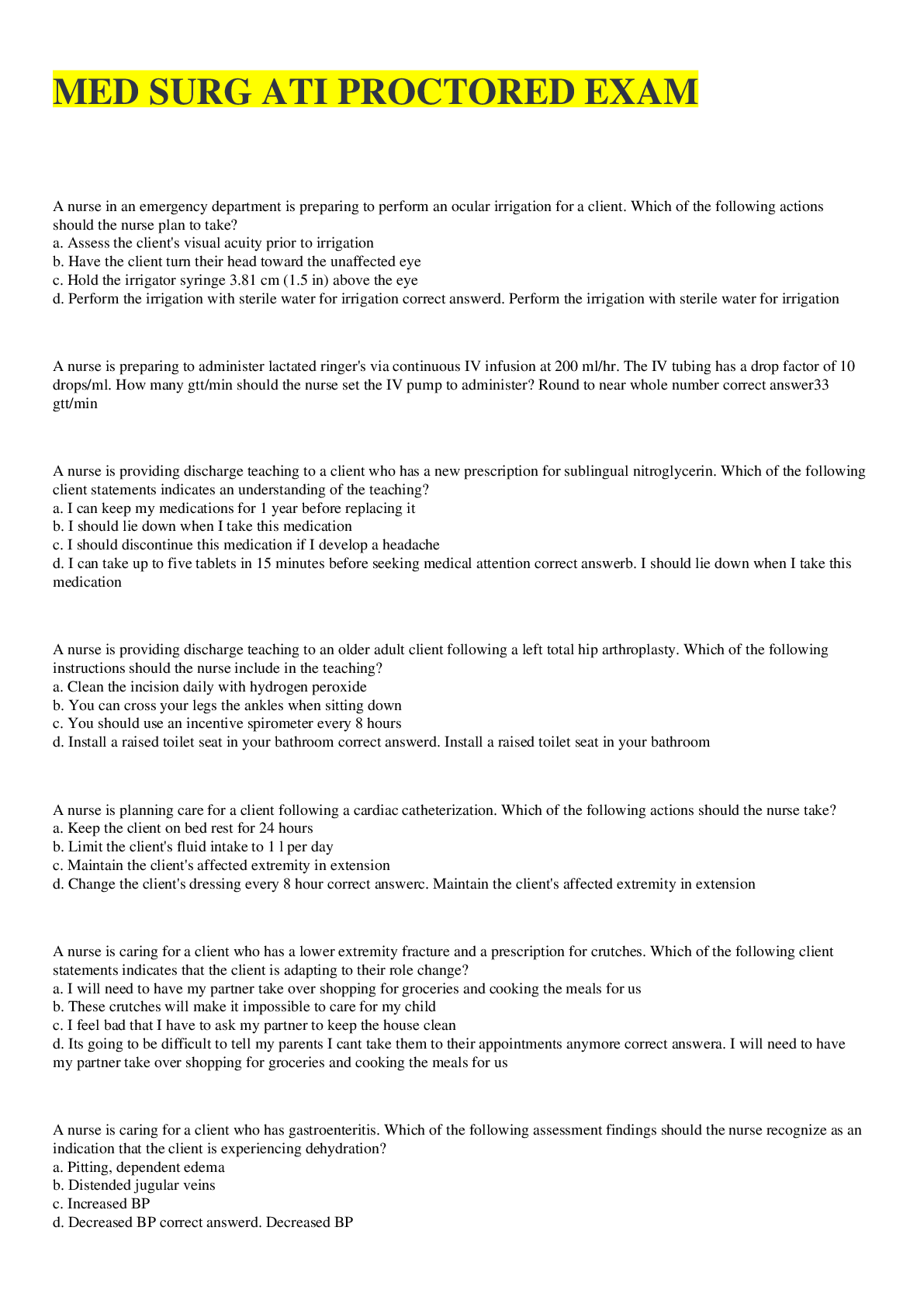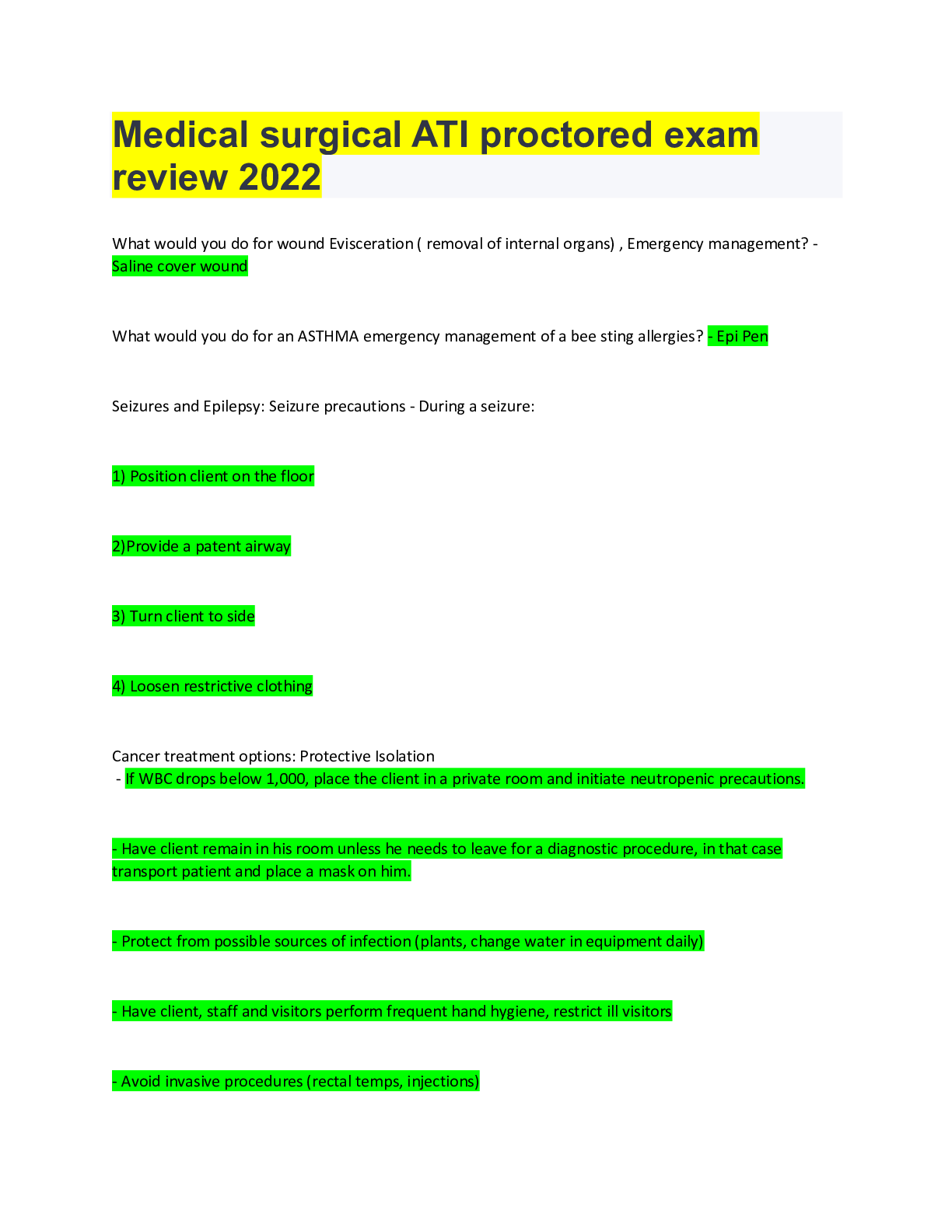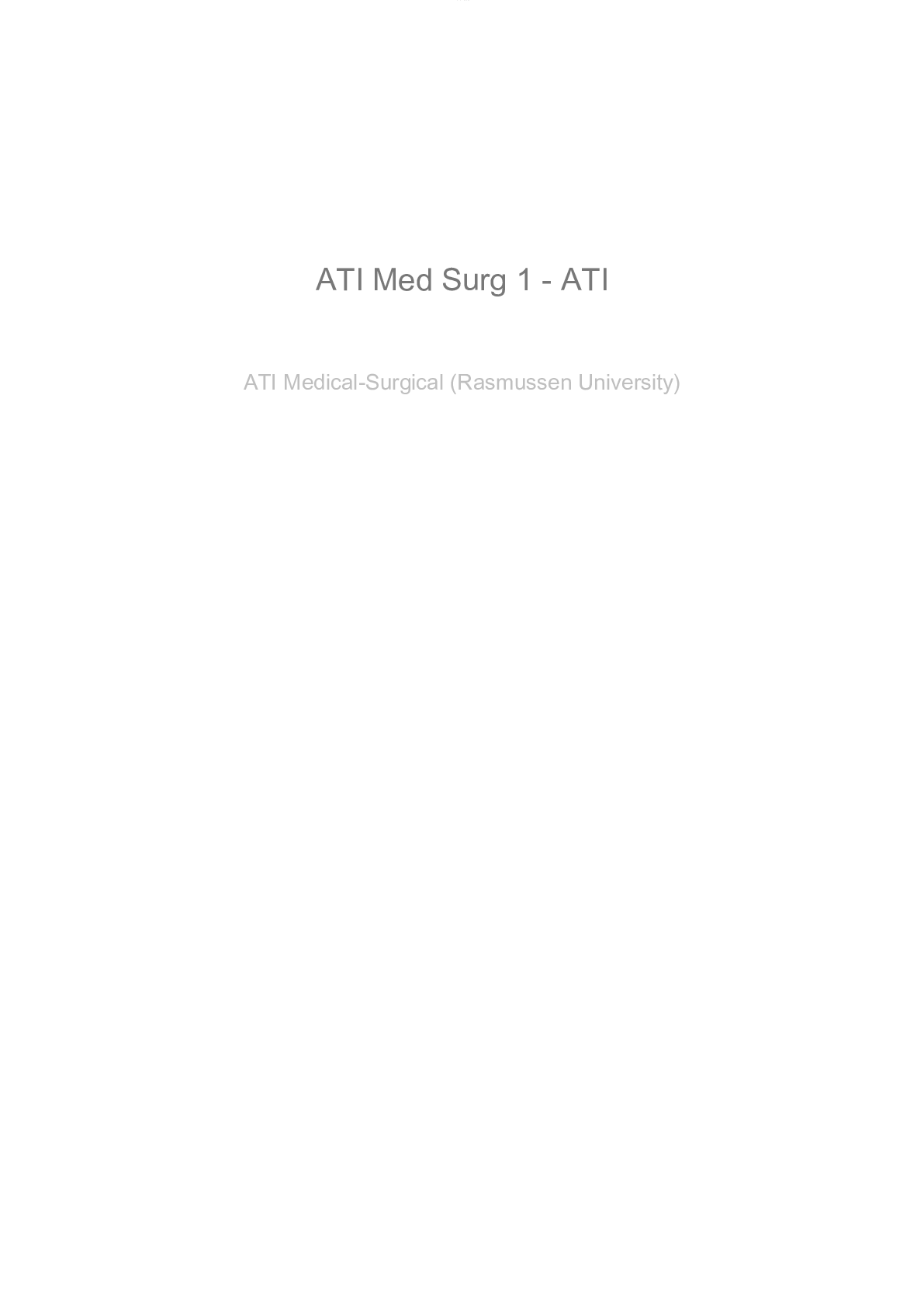*NURSING > MED-SURG EXAM > ATI MedSurg Test Bank, Gallbladder and Pancreatic Disorders (All)
ATI MedSurg Test Bank, Gallbladder and Pancreatic Disorders
Document Content and Description Below
Daniels Chapter 51 Hepatic, Biliary Tract, and Pancreatic Dysfunction: Nursing Management MULTIPLE CHOICE 1. A child care worker complains of flu-like symptoms. On further assessment, hepatitis is s... uspected. The nurse realizes that this individual is at risk for which type of hepatitis? ANS: 1 Hepatitis A virus (HAV) is spread through the fecal-oral route. Child care workers are at greater risk because of potentially poor hygiene practices. Child care workers are not at the same risk for contracting hepatitis B, C, or D. 2. An older male is diagnosed with cirrhosis of the liver. The nurse knows that the most likely cause of this problem is: ANS: 3 The destruction to the liver from alcohol often progresses from fatty liver to alcoholic hepatitis and culminates in alcoholic cirrhosis. Alcoholic cirrhosis accounts for a great number of individuals diagnosed with this disease. Cirrhosis is not associated with being in the military, traveling to a foreign country, or eating bad food. 3. When the liver is seriously damaged, ammonia levels can rise in the body. One of the treatments for this is: ANS: 3 Lactulose is a laxative that works by pulling water into the stool. It also helps pull ammonia from the blood into the colon for expulsion. IV antibiotics do not reduce serum ammonia levels. Vitamin K controls bleeding, but it does not reduce ammonia levels. Insulin is not used to reduce ammonia levels. 4. A client is scheduled for a liver biopsy. The nurse realizes that the most important sign to assess for is: ANS: 2 After a liver biopsy, the client is monitored for bleeding or hemorrhage. Infection and pain are of concern, but they are not the most important signs to be monitored. Nausea and vomiting are not typically associated with a liver biopsy. 5. The nurse realizes that the organ which is a major site for metastases, harboring and growing cancerous cells that originated in some other part of the body, is the: ANS: 3 In most developed countries, this secondary type of liver cancer is more common than cancer that originates in the liver itself. The spleen, gallbladder, and stomach are not major sites for metastases. 6. A school age child is placed on a waiting list for a liver transplant. The nurse knows that the most common reason for children to need this type of transplant is because of: ANS: 2 Biliary atresia is the most common reason for children to have a liver transplant. Cirrhosis due to hepatitis C is the reason for most adults to have a transplant. Children do not typically need a liver transplant for diabetes or Crohns disease. 7. Because health care workers are at a greater risk of hepatitis B infection, it is recommended that all health care workers: ANS: 3 Because of the risk of blood and body fluid exposure, it is recommended that all health care workers be vaccinated against hepatitis B virus. All health care workers should engage in frequent handwashing, but handwashing is not the primary mechanism to prevent the onset of hepatitis B. Avoiding foreign travel and drinking bottled water only will not reduce the risk of hepatitis B. 8. A client who usually smokes a pack of cigarettes a day tells the nurse that he cannot stand the smell of smoke. The nurse realizes that this client is in which phase of hepatitis? ANS: 1 In the preicteric phase of hepatitis, some smokers will have an aversion to smoking as a first sign of the disease. Smoking is not affected with the icteric or posticteric phases of the disease. Recovery is not a phase of hepatitis. 9. A female client is surprised to learn that she has been diagnosed with hemochromatosis. Which of the following should the nurse respond to this client? ANS: 3 Women do not experience the effects of hemochromatosis until menopause when the regular loss of blood stops. This disorder is a genetic disorder and can affect individuals of all ages. The nurse should not doubt the physicians diagnosis. All women do not have this disorder. 10. A client is diagnosed with liver disease. Which of the following is one impact of this disorder on a clients fluid and electrolyte status? 4 Hyponatremia . [Show More]
Last updated: 1 year ago
Preview 1 out of 29 pages
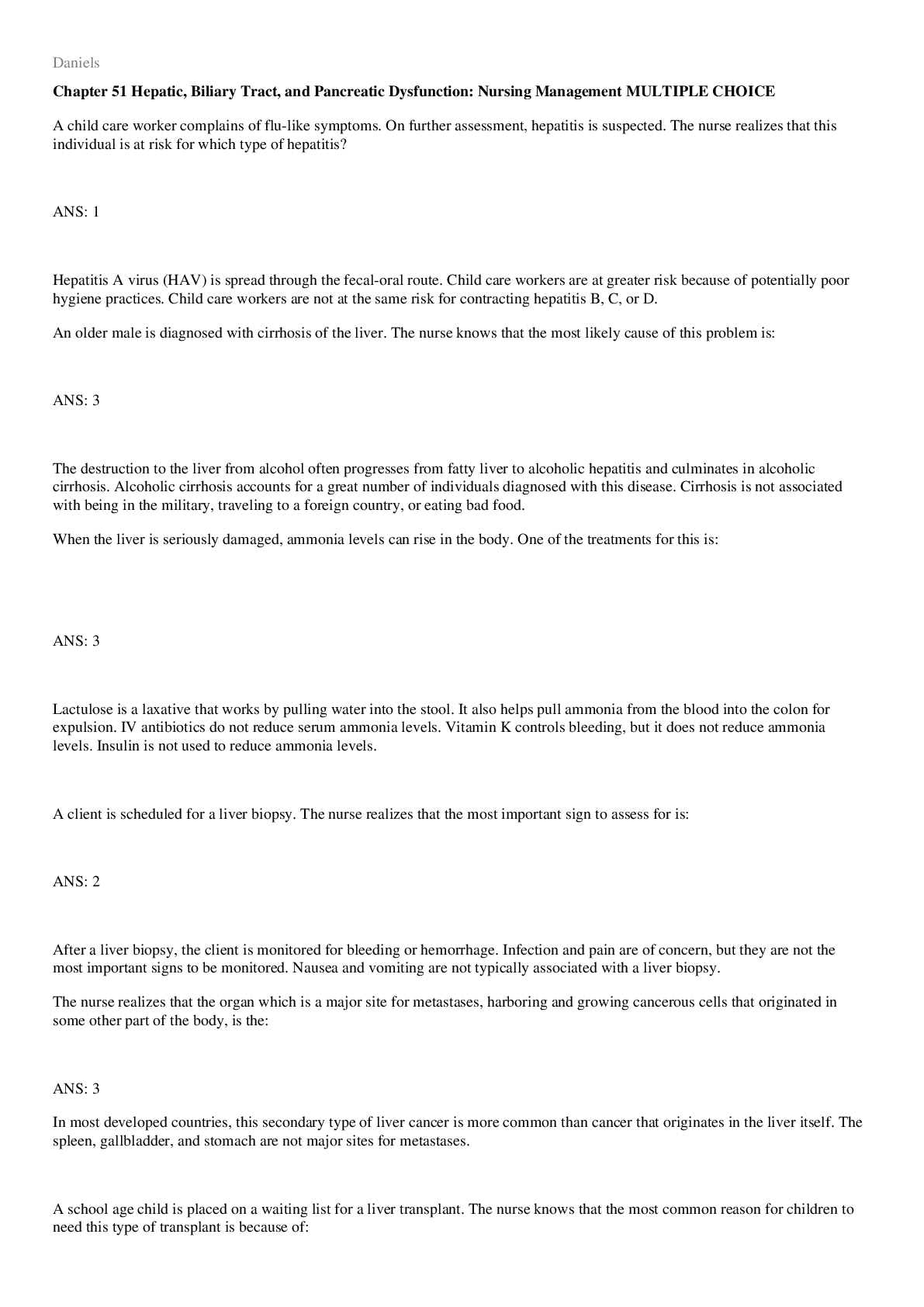
Reviews( 0 )
Document information
Connected school, study & course
About the document
Uploaded On
Mar 13, 2023
Number of pages
29
Written in
Additional information
This document has been written for:
Uploaded
Mar 13, 2023
Downloads
0
Views
56

